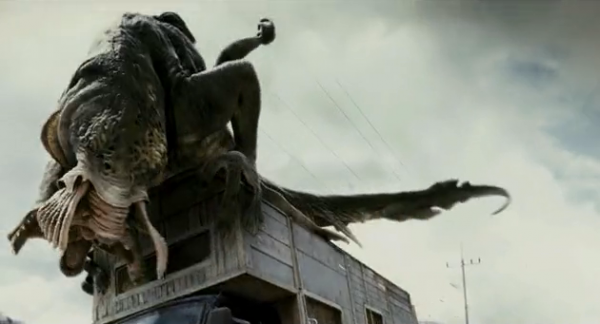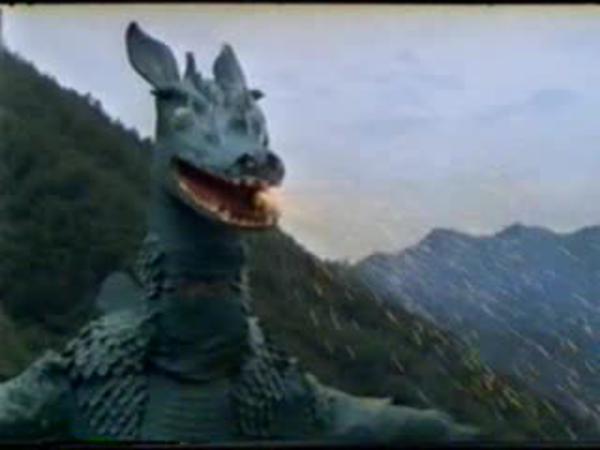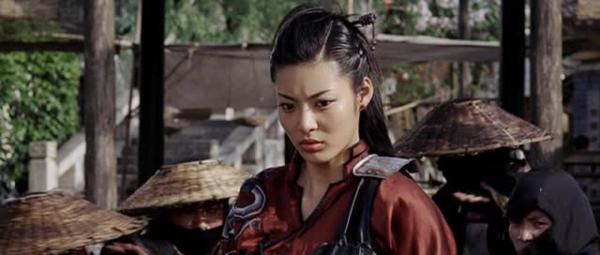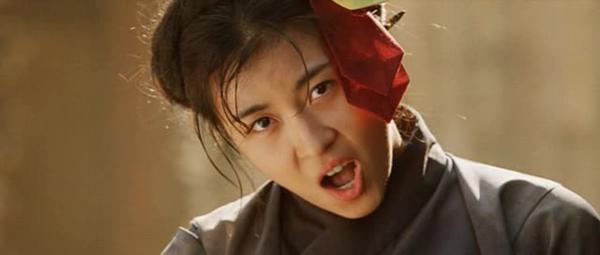via Twitch
You Pet
You Pet
aka 너는 펫 aka Neo-neun Pet

2011![]()
Directed by Kim Byeong-gon

It’s time once again to dip our toes into the water that is Korean romantic comedies. You Pet has a slight twist, in that it is a Korean film but is based on a Japanese manga (Yayoi Ogawa’s Kimi wa Petto, which was also the basis for the Japanese tv series of the same name.) The translation into a distinctly Korean film is handled pretty well, you definitely will know the country of origin. Playing the lead is TarsTarkas.NET favorite Kim Ha-neul, who somehow always manages to be in entertaining romantic comedies. It’s like she was created in a lab after decades of testing, sort of how Disney produces their child stars. Playing opposite is Jang Geun-seok, who is one of the biggest studmuffins in all of Asia. You’ve probably heard of him, and his whole Prince of Asia designation, so I won’t go into much detail. Their individual charisma and chemistry together help elevate You Pet into a great piece of film. And that’s the most important thing, because the concept behind You Pet requires the leads work well together to keep it from becoming very disturbing.

It is important to note that like all romantic comedies, You Pet and Korean romantic comedies in general exist in an idealized world, where relationships fall into more easily defined categories and people don’t carry baggage associated with just living a life. Very attractive people will be alone for years and years because of the tiniest of flaws making the repellant to everyone of the opposite sex, and unattractive people just don’t exist (except for the occasional wacky character). Heck, even the extras in You Pet are almost all young professionals who look straight out of a talent agency. Even Eun-I’s parents look younger than they are, and appear ever-fleeting, less they age up the film.

You Pet does buck a bit of the trends by taking the established order of things and bending it on its ear. Instead of presenting the traditional want of landing a rich man and living happily ever after, You Pet‘s master/pet relationship between Eun-I and In-ho subverts things, but in a family-friendly way. Now, Korea may be modern and filled with people rapidly keeping up with today’s fast movie world, but it is also a land full of traditions. And these start to collide with the modern thinking when it comes to two people of the opposite sex living together while not in a relationship. Just having a male-female relationship that isn’t lovers and isn’t best friends can muddy the waters, and things get very cloudy very quickly, but a good cloudy. And while a safe outside the box approach to old traditions vs. modern life isn’t the most risky thing in the world, it does help reflect times changing, and I applaud films that try to do interesting things as opposed to playing it safe and boring. While many of Korea’s romantic comedies are sugar-coated fluff, some of them do confront relationship expectations in their own friendly-faced way, you just won’t get things like Happy End.


|

Alien Lightning Dragon (Review)
Alien Lightning Dragon
aka 외계 번개용 aka Oegye beongye yong aka Alien Thunder Dragon 2

1988![]()
Written and directed by Bang Sun-deok
 |
|
You can smell the toxic fumes decades later…
|
It’s Wacky Korean Kiddie Flick Time! Today’s installment is the fabulous alien rock star women kidnapping children to turn into frozen popsicle dinners. Alien Lightning Dragon is filled with the usual Korean kiddie film tropes: “funny” fat guys, animated tokusatsu action sequences, annoying children, copyright infringement, and ridiculous costumes.
At TarsTarkas.NET, we know what we’re getting into when we delve into a Korean kiddie flick. And we also know that these films are barely watched by anyone, and deservedly so. But they are fun to gawk at, even if they are one of the worst cinematic genres on the planet.
 |
|
Oh, honey, that’s not how you put on eyeshadow…
|
Gangs of space goons lead by rejects from the Jem and the Holograms cartoon invade various schoolyards and day care centers, kidnapping children and creepy adults who are playing children. The kids are destined to become dinner, and no one seems to care except a rag tag group of heroes and relatives of kidnapped children. Luckily, they also find a good Jem reject and her Alien Lightning Dragon megazord/costume/robot/whatever that can fight these space cases and save the day.
If this is a direct rip off of an actual property, then I feel sorry for whatever property it originally is. But what we get looks so generic and bad that I wouldn’t be surprised if this was all original and written just to reuse sets and costumes that are churned out on a production line, as there are literally dozens and dozens of these kid flicks.
 |
|
The town had insulted Spider and Renegade, so they had to pay. Berry lead the charge, as always, and by sunrise every home was a burnt out cinder. Maple Falls never recovered.
|
Alien Lightning Dragon is an in name only sequel to Alien Thunder Dragon, made one year after the original. It looks like the only thing that made it to the sequel was the dragon costume and the animation. Like many of these films, there were cheap toy tie-ins and other merchandise, though most of it (except for a Making Of book) looks like it is based on the original film. The first film features a cadre of evil space ladies, and this sequel also features evil space ladies, so they at least aped the formula.
Wait a second…. This film has a secret underground compound where children are kidnapped? Is this a North Korean allegory? Do the wild flashy costumes of the evil space women mirror Kim Jong-il’s love of flashy Hollywood? Is Alien Lightning Dragon something larger than it appears at first? Probably not, but you never know…
 |
|
Forget the Jem jokes, it’s time for some Go-Bot jokes!
|
Here at TarsTarkas.NET, we don’t need no stinking subtitles, and it’s not like knowing what the heck is going on would have made this film any less stupid. So enjoy the made up names, they’re probably better than the real ones. Even reading a synopsis I found only answers some questions:
Aliens are kidnapping the children of earth to use as frozen food. Kyung-ah and Hyung-cho use the Spirit Robots to go rescue them. Kyung-ah’s team finds the children, Hun and Young-mi, who are toys for the alien princess. But the alien queen finds out and is furious. She ends up capturing Kyung-ah’s team as well. At this, Prof. Min, Princess Aran, Yong, and Dung-bo recharge Lightening Dragon’s energy and go to rescue the children. A fight between the Dragon and the queen’s men is inevitable. Just as Lightening Dragon is nearly conquered, Dung-bo and the children blow their harmonicas. The queen who wanted to conquer earth is touched by the music and she repents all her past evil deeds.
The synopsis seems to think some minor characters are the real stars, and the main characters are barely mentioned.
 |
|
We’re gonna track down Jerrica Benton and take her out!
|

|
 |
|
Looks like these films have a bigger body count than I thought!
|
Shadowless Sword
Shadowless Sword
aka 무영검 aka Muyeong geom

2005![]()
Written by Kim Tae-kwan and Sin Joon-hee
Directed by Kim Young-Jun

A stylized action flick overly heavy on outside influences, Shadowless Sword delivers some good wirework action, but not enough heart or story to put it beyond popcorn fare. The fact that Shadowless Sword is a Korean flick does transform some of the usual wuxia tropes into new forms, giving Shadowless Sword a uniqueness, but that’s not enough to satisfy.
A period piece filmed in China, Shadowless Swords gets it story from the ancient Korean kingdom of Balhae and is very very loosely based on reality. Balhae was conquered by the Kitans in 926, and the royal family was killed and the kingdom turned into a puppet state that was eventually absorbed. But the last crown prince Dae Gwang-hyeon escaped with around 300 followers, arriving in Goryeo (the Kingdom from which modern Korea sprang) and causing occasional trouble for the Kitan. From reading up, the actual Dae Guang-hyeon history sounds much more interesting than the story used here. (If you are confused by the Dae Guang-hyeon/Dae Jeong-Hyun being the same person that, welcome to the wonderful world of different translation schemes colliding!)

Shadowless Sword‘s action sequences are heavily invested with wirework, and at times almost too choreographed. You start to notice a pattern and then predict when there will be a cut as the actor flips to suddenly fly in the air. But the choreography not bad, in particular the duel between Yeon So-Ha and Mae Young-Ok in the marketplace is very nice.
There is a heavy emphasis on qigong energy type moves, attacks cause the walls and pillars to explode in ridiculous fashion when people are thrown into them. In physical attack, bodies can explode violently, sometimes much later than the physical attack itself.
This expands with a sort of sword energy mythology – Shadowless Sword tries to include including philosophy of sword debates, can swords become noble or evil, or is it up to the user to decide what the sword is. Can a sword become evil? Where does the morality of killing come from? Another major point is two swords that are brothers, the swords being connected and also the people using the swords are connected

One neat thing is the energy attacks also work underwater, this is the only film I can recall seeing where energy is blasted back and forth underwater causing the energy pushing the water to be used as a weapon (The Last Airbender doesn’t count!) There is also lots and lots of shuriken. At one point bad guys throw like 100s of shuriken into the water likes they are machine guns, which is sort of bad. It crosses into ridiculous territory and takes you out of the film.

Shadowless Sword does borrow a lot of visuals from other films, Crouching Tiger gives us flying rooftop chases, a Korean gang has everyone dressed up like Johnny Depp in Pirates of the Caribbean (if this is accurate historical costuming, then we’re though a rabbit hole now, people!), the energy stuff sounds like it’s from a billion manga comics, fields of flags see straight from Kurosawa, and the end scene is very recognizable as well. If Shadowless Sword can’t be bothered to be less obvious in what it steals, then I can’t be bothered to care too much.

|

The Kick
The Kick
aka 더 킥 aka วอนโดนเตะ!!

2011![]()
Story by Prachya Pinkaew
Screenplay by Lee Jong-suk Lee
Directed by Prachya Pinkaew
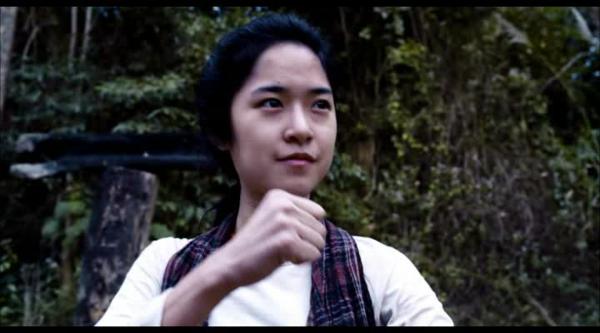
Thai and Korean co-production The Kick shot on people’s radar for two reasons: Director Prachya Pinkaew, and Jija Yanin having a supporting role in the film. That’s all that was reported, and for the longest time it was hard to tell what kind of role Jija even had in the flick. Well, time has passed, and now The Kick is available on DVD and we can see Jija has a substantial supporting role in the last 2/3rds of the flick and participates in several fight scenes. There is also plenty of other action from the Korean actors, but the film does drag at points due to pacing and humor issues. It is far from Prachya Pinkaew’s best work. It’s almost another Jakkalan, though it does give us an interesting Korean/Thai hybrid film, something I don’t think there are too many examples of.

Though I thought I wouldn’t care about the Korean family, they began to grow on me (except for the young kid!) and even though they spend a good amount of time yelling at each other, they also come together to deal with bigger threats. Each family member has a different martial arts move skill, and the fights jump from solo to various pairings to group fighting. Unfortunately due to the amount of characters we rotate through the scenes quickly when all hell is breaking loose. The fight scenes in the last 20 minutes are great, but they also make the prior 90 minutes look terrible. I wish it had been more consistent on the choreography. In fact, I’d probably suggest just skipping until the end for most casual fans and people who don’t like putting up with nonsense.
Prachya Pinkaew has become a household name in martial arts film fan circles, with Ong-Bak, Tom-Yum-Goong, and Chocolate under his belt, and several upcoming films that look to be awesome as well. Several of the stars are members of the Korean Tigers tae kwon do group.


|

Duelist (Review)
Duelist
aka 형사 aka Hyeongsa

2005![]()
Written by Lee Myung-se and Lee Hae-kyeong
Based on the comic by Bang Hak-ki
Directed by Lee Myung-se

Stylish visuals and Ha Ji-won can’t save Duelist from the horrors of mediocrity. They try so hard! But close only counts with horseshoes and hand grenades. Duelist suffers a few too many flaws to for me to recommend it, though I can appreciate the type of film it was trying to be. It’s an anachronistic tale of ancient detectives working against an attempted coup plotted against the Korean king, complete with stylized visuals that will remind you of MTV editing. But it’s actually a film about two people connecting, people on opposite sides of a conflict. And the tragedy that results. This is a Korean film, after all!
As longtime readers (all 3 of you) know, I’m a sucker for crazy visualizations in film. Especially when they’re integrated so well into the film they become indispensable. Parts of Duelist achieve this goal. But other parts do not, the visuals become a distraction at best, and a problem at worst. There are lots of scenes that transition not by normal cuts, but instead by the camera sweeping into the new scene and the old scene becomes the new. That was neat. I wasn’t so keen on the montages that features a lot of scenes fading in and out, but parts never fully fading in, just imprinting on the scene. It seemed more like the film was trying to remind us of what the characters were feeling and thinking about, even though we should know just by virtue of paying attention.

Duelist takes its music queues from throughout the world and throughout time, so European circus tunes and classic Korean music are both used to set whatever mood is needed. Even the noises of crowds cheering are dubbed in despite a lack of such crowds, to make us know that an action is worth our admiration.
The action scenes work well when it’s limited to two combatants, but the larger battle sequences don’t feature the drama and intimacy of the film’s duels (and the intimacy isn’t helped by the larger sequences featuring lots of overhead shots of crowds instead of shots in the battles. Lee Myung-se does his preferred smaller fights with a mix of slow-motion and sped-up choreography, which both shows off the dueling as a loving slow dance, and as a wild and furious clash of emotions. The duels often aren’t about fighting, but have a larger emotional meaning.

Duelist comes from a time when Korean cinema was riding high, atop the world. But that horse was getting tired, and the world is ever-spinning. Bearing that in mind, I still judge Duelist against its contemporary films and the quality of the work that was being released at the time. Duelist does not measure up. Were it released today, it would be regarded as a mini-masterpiece. But in the middle of the shuffle of some of the greatest cinema to come out of the peninsula, Duelist barely registers.


|



